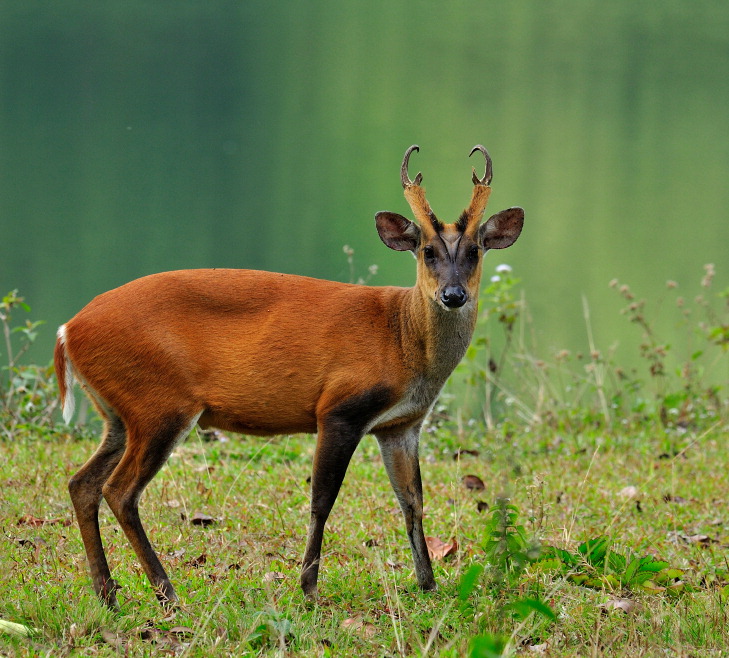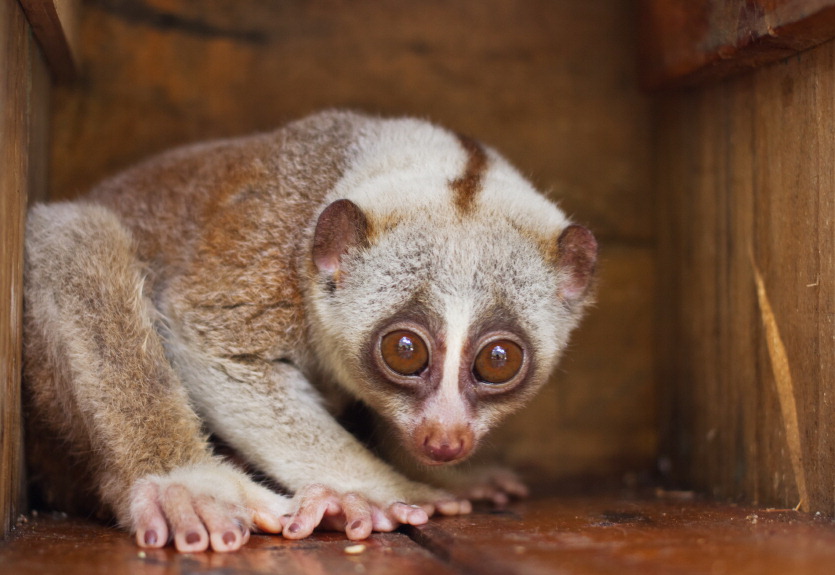|
Cycle 3 (2014 Deadline) Biodiversity conservation in Indochina: integrating research and training to enhance wildlife trade management PI: Minh Le ( minh.le.cres@gmail.com), Central Institute for Natural Resources and Environmental Studies of Vietnam National University (VNU-CRES), with co-PIs Seak Sophat, Royal University of Phnom Penh, and Sengdeuane Wayakone, National University of Laos U.S. Partner: Mary Blair, The American Museum of Natural History
Project Dates: September 2014 to February 2018 Project Overview
One of the biggest direct threats to biodiversity in Indochina is the illegal wildlife trade, which has driven many species to the brink of extinction. This problem will likely get worse without immediate and effective measures to control the trade. Conservation efforts in the region have been hindered by the lack of understanding about the pattern, scale, and drivers of the trade. A more comprehensive approach is therefore critically needed to characterize the trade network, and design cost effective conservation measures. In this project, the research team addressed issues related to the trade by surveying wildlife markets and by strengthening the existing research and conservation activities between Indochinese countries, such as Cambodia, Laos, and Vietnam. The research team built capacity in conservation genetics, forensic science, and socioeconomic analyses of trade activities, as these skills are critically needed to tackle this complex threat in the region. The project had three main aims: (1) clarify the scale and drivers of the wildlife trade through market surveys in Indochina; (2) develop a DNA database for all protected animal species in Indochina for trade monitoring and enforcement; and (3) strengthen existing research in the conservation genetics of lorises, muntjacs, and turtles to identify unique lineages in groups under the highest harvesting pressure.
The research project expanded on U.S. partner Dr. Mary Blair’s research project through the development of a biodiversity research network across Vietnam, Laos, and Cambodia for coordinated data collection, DNA database mapping, and capacity building. The project also added in-depth studies of key trade-targeted species beyond lorises, including muntjacs and turtles. Dr. Blair worked closely with the research team on field surveys, genetic analyses of the lorises, and the development of socioeconomic data collection and analysis methods to enable coordination of these methods across the PEER and NSF projects, thus expanding their collective impact.
Final Summary of Project Activities
 |
On December 8, 2017, Dr. Le and his co-PIs organized the final workshop on the project, which was held at the Central Institute for Natural Resources and Environmental Studies (CRES) in Hanoi. The workshop was entitled “Wildlife Trade in Indochina: Applications of Research Results to Combating Wildlife Trade,” and during the event project participants presented data and results to an audience including more than 40 different researchers and government and NGO officials. Organizations represented included the Wildlife Conservation Society, Asian Turtle Program, USAID, USAID Saving Species program, the U.S. Embassy, universities, research institutions, and the Vietnamese Ministry of Agriculture and Rural Development. In addition to the presentations, lively discussions ensued regarding approaches developed during the project for potential applications to enhance wildlife management.
At the time the project’s funding support from PEER ended as of February 28, 2018, Dr. Le summarized his team’s key accomplishments as follows:
- Eleven papers were published under the project. Of these, ten were published in international journals and one in a Vietnamese journal. Three of the publications were co-authored with the U.S. partner, Dr. Mary Blair of the American Museum of Natural History.
- Nine presentations were given at international and national conferences/workshops.
- A prototype of the DNA database, which integrates sequences of protected vertebrate species in Indochina and modern bioinformatic tools to enhance wildlife trade management, was developed to fulfill the project goal. The Biodiversity Conservation Agency of the Vietnamese Ministry of Natural Resources and Environment, which implements the country’s national biodiversity law, is interested in further developing the database to support biodiversity research and conservation in Vietnam.
- The project team organized three workshops, which included more than 80 participants. One training workshop helped building the capacity of more than 30 trainees in forensic science and molecular sequencing to enhance wildlife trade management and biodiversity research.
- Three undergraduates, three Master’s students, and one PhD student received training through their participation in the project.
- The PI and the U.S. partner raised more than $300,000 in additional funding to conduct further research activities related to the PEER project.
- Dr. Le and Dr. Blair are continuing to develop research activities and collaboration and completing additional manuscripts and proposals for submission to various journals and funding agencies to ensure the long-term sustainability of the project.
Publications
Mary E. Blair, Minh D. Le, Gautam Sethi, Hoang M. Thach, Van T. H. Nguyen, George Amato, Mark Birchette, And Eleanor J. Sterling. 2017. The Importance of an Interdisciplinary Research Approach to Inform Wildlife Trade Management in Southeast Asia. BioScience 67: 995–1003. https://doi.org/1 0.1093/biosci/bix113
Renata F. Martins, Jörns Fickel, Minh Le, Thanh van Nguyen, Ha M. Nguyen, Robert Timmins, Han Ming Gan, Jeffrine J. Rovie-Ryan, Dorina Lenz, Daniel W. Förster, and Andreas Wilting. Phylogeography of red muntjacs reveals three distinct mitochondrial lineages. BMC Evolutionary Biology 17:34. https://doi.org/10.1186/s12862-017-0888-0
Mary E. Blair, Minh D. Le, Hoàng M. Thạch, Anna Panariello, Ngọc B. Vũ, Mark G. Birchete, Gautam Sethi, and Eleanor J. Sterling. 2017. Applying systems thinking to inform studies of wildlife trade in primates. American Journal of Primatology 2017: e22715. https://doi.org/10.1002/ajp.22715
Vinh Quang Luu, Michael Bonkowski, Truong Quang Nguyen, Minh Duc Le, Nicole Schneider, Hanh Thi Ngo, and Thomas Ziegler. 2016. Evolution in karst massifs: Cryptic diversity among bent-toed geckos along the Truong Son Range with descriptions of three new species and one new country record from Laos. Zootaxa 4107(2): 101-140. http://doi.org/10.11646/zootaxa.4107.2.1
Vinh Quang Luu, Truong Quang Nguyen, Minh Duc Le, Michael Bonkowski, and Thomas Ziegler. 2016. A new species of karst-dwelling bent-toed gecko (Squamata: Gekkonidae) from Khammouane Province, central Laos. Zootaxa 4079 (1): 087–102. http://doi.org/10.11646/zootaxa.4079.1.6
Minh Le, Fernando Penaloza, Renata Martins, Thanh V. Nguyen, Ha M. Nguyen, Dang X. Nguyen, Luong D. Nguyen & Andreas Wilting (2016) Complete mitochondrial genomes of the Laotian Rock Rat (Laonastes aenigmamus) confirm deep divergence within the species. Mitochondrial DNA Part B 1(1): 479-482. http://dx.doi.org/10.1080/23802359.2016.1186520
Back to PEER Science Cycle 3 Grants
|
|
|
|





